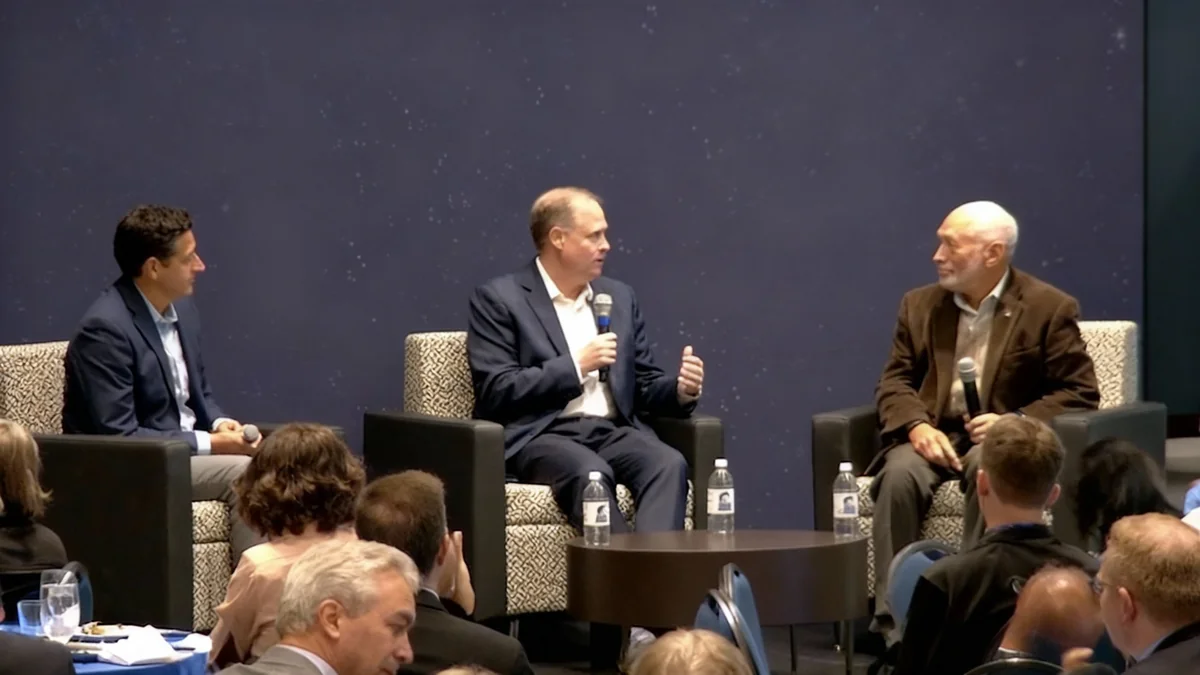Two former NASA administrators have publicly called for a significant reassessment of the agency's strategy for landing astronauts on the Moon. Citing concerns over complexity and delays with SpaceX's Starship, they argue the current approach jeopardizes the United States' goal of a timely lunar return and its competitive standing with China.
The statements from Charles Bolden and Jim Bridenstine, who led the agency under different administrations, came during a panel discussion at the American Astronautical Society’s 2025 von Braun Space Exploration Symposium in Huntsville, Alabama. Their critique adds influential voices to a growing debate over the architecture of the Artemis program.
Key Takeaways
- Former NASA Administrators Charles Bolden and Jim Bridenstine expressed serious doubts about the current Artemis Moon landing plan.
- They criticized the complexity of using SpaceX's Starship, which requires multiple refueling launches.
- Bridenstine emphasized the need to use proven systems like the SLS rocket to ensure the U.S. lands on the Moon before China.
- Bolden compared the current plan's complexity to the canceled Constellation program, warning it could lead to failure.
- The discussion follows a recent NASA announcement to reopen competition for the Artemis 3 lander contract.
Concerns Over Complexity and Timeline
The core of the criticism centers on the operational requirements for SpaceX’s Human Landing System (HLS), a variant of its massive Starship vehicle. The current plan involves an unprecedented series of launches to get the lander ready for a single crewed mission.
First, SpaceX must launch multiple Starship tankers into low Earth orbit. These tankers will then transfer propellant to a separate fuel depot, also in orbit. Finally, the HLS Starship will launch, dock with the depot to fully fuel up, and then travel to lunar orbit to await the arrival of the Orion crew capsule.
Charles Bolden, who served as NASA administrator from 2009 to 2017, drew parallels between this multi-launch architecture and the over-complexity that led to the cancellation of the Constellation program, NASA's previous lunar effort.
"How did we get back here where we now need 11 launches to get one crew to the moon? We’re never going to get there," Bolden stated during the symposium. He argued that such a complex system introduces too many points of potential failure and delay.
Bolden suggested that focusing on arbitrary deadlines, such as landing "by the end of a term" or "before the Chinese," is counterproductive. Instead, he advocated for NASA to provide contractors with clear financial commitments and to establish realistic timelines based on both optimistic and pessimistic projections.
A National Security Imperative
Jim Bridenstine, who led NASA from 2018 to 2021, framed the issue as a matter of national security and a new space race with China. He argued that waiting for the unproven Starship system to mature is a strategic risk.
"If we’re going to beat China to the moon, we’ve got to have SLS," Bridenstine said, referring to the Space Launch System rocket. "We have to use what we know works right now today. SLS is a proven system. Orion is a proven system... What we don’t have is a lander."
Artemis Architecture at a Glance
- SLS Rocket: The primary launch vehicle for the Orion spacecraft.
- Orion Spacecraft: The capsule designed to carry astronauts to lunar orbit and back to Earth.
- Human Landing System (HLS): The vehicle tasked with ferrying astronauts from Orion in lunar orbit down to the surface and back. SpaceX's Starship is the current prime contractor for the first landing.
Bridenstine proposed a more aggressive, focused approach to developing a lander, invoking the spirit of the Defense Production Act. He envisioned a small, empowered team, similar to Lockheed Martin's famous "Skunk Works" division, to rapidly build a simpler lander.
"This is a national security imperative, that we’re going to beat China to the Moon," he asserted. He believes that with the current Starship-dependent plan, the "probability of beating China approaches zero rapidly."
Alternative Paths Forward
The discussion comes shortly after NASA Acting Administrator Sean Duffy announced on October 20 that the agency would reopen competition for the Artemis 3 HLS contract, originally awarded exclusively to SpaceX in 2021 for $2.89 billion. This move signals that the agency may also be seeking alternative or backup options.
SpaceX's Starship Progress
Since winning the HLS contract, SpaceX has conducted 11 integrated test flights of its Starship-Super Heavy rocket from its Texas facility. The company is now preparing for the first flight of its Version 3 vehicle, which is the design intended to demonstrate in-space refueling and an uncrewed lunar landing. The exact number of refueling flights required for a mission remains unspecified.
Bridenstine suggested that a more direct, Apollo-style mission profile could be viable. This would involve using an upgraded version of the SLS rocket, equipped with the Exploration Upper Stage, to launch both the Orion capsule and a lander on a single flight, dramatically simplifying the mission architecture.
"If we just unshackled these capabilities and let them move forward quickly, we’d go fast and it’d be cheaper, as a matter of fact," he argued.
Meanwhile, other industry players are positioning themselves to offer alternatives. Blue Origin, which is developing its Blue Moon lander for the later Artemis 5 mission, is exploring ways to accelerate its timeline. Jacqueline Cortese, a senior director at the company, confirmed they are working on an "incremental approach" that could be used for an earlier landing mission.
The public critique from two of its former leaders places NASA at a critical juncture. The agency must now balance its commitment to fostering new commercial capabilities with the pressing geopolitical and programmatic desire to return American astronauts to the lunar surface safely and swiftly.





